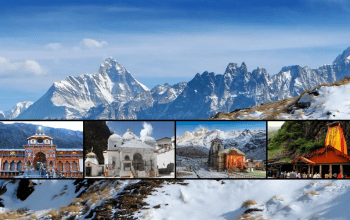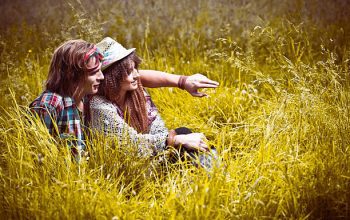Discover What It’s Like to Trek Beyond Everest Base Camp with the Gokyo Lakes and Cho La Pass Trek
Many travelers think that the only way to get closer to the Himalayas is to embark on a once-in-a-lifetime trek to the Base Camp of Mount Everest (EBC) or Kala Patthar if you are unable to reach the summit of Everest—a feat that is only possible for the most accomplished climbers.
However, it’s not always the last step to be rewarded with views of the Himalayas. You can push yourself and go on an alternate trip that is outside of the typical Everest Base Camp journey, such the hikes to Gokyo Valley or Chola Pass.
There is an equally gratifying trekking route that offers breathtaking views of not only Mount Everest but also its relative mountains, as well as other glacier lakes that are gently resting and shimmering on the gigantic summits.
An well-known river system known as the Gokyo Lakes lies tucked away in the center of the high Himalayas. This location offers a series of breathtakingly gorgeous and almost bizarre lakes surrounded by perfectly groomed mountains coated in ice.
Part of an extended EBC journey, the Gokyo Valley trek is typically undertaken by hikers who are not only more time-efficient but also daring enough to take on additional challenges. However, Mosaic Adventures can also set up the Gokyo Lakes Trek for you if you would prefer to forego Everest Base Camp and head straight to Gokyo.
Even though the Everest Base Camp With Gokyo Lakes Trek via Choa Pass trekking route offers climbers a plethora of visual attractions, the trek can become so difficult that many adventure-seekers choose to do it. This trip extends our usual Everest Base Camp trek by four additional trekking days, allowing us to see distinctive cultures and traverse through a variety of landscapes and Sherpa settlements.
The Gokyo route is highly recommended if you want to venture off the main path and take on extra challenges. A few things to know about this hiking excursion are listed below.
- The trekking difficulty level increases as you go up.
We begin our tour with a walk that is quite simple. We start off going through Sherpa settlements on level ground with stone steps.
The terrain gets a little more difficult as we ascend to Namche Bazaar, where we must acclimate.
After then, it goes on to Cho La and gets harder as you get closer to Gokyo, which is located at 5,357 meters (17,570 feet) above sea level.
This is a challenging hike with undulating terrain and steep inclines.
- For international hikers, the landscapes are like no other.
This voyage offers visual rewards unlike anything other. This is the reason why embarking on this Himalayan expedition is among the most sought-after endeavors for adventure-seekers and climbers worldwide. Enjoy picture-perfect scenery as we ascend on our way from Lukla to Everest Base Camp.
There’s a bonus, though! We get to hear real sounds when hiking, such as the singing of birds, the cheerful greetings of Sherpas, the footsteps of yaks, and the excited shouts of climbers.
We hike across suspension bridges across rivers and get to witness the stunning Dudh Kosi River as well as lovely rhododendron trees. We first see Mount Everest and the other mountains (Lhotse, Ama Dablam, and Taboche Peak) as we arrive at Namche Bazaar.
We pass through little towns and are surrounded by views of meadows, farms, and snow-capped mountains. Furthermore, the view gets even more breathtaking as the hike gets harder.
- Gokyo Lakes
In order to enjoy a full day of lake hopping the next day, we spend the night before we view the lakes at Gokyo.
Longponga is the name of the first Gokyo lake that we will encounter. The second lake, TaujungTasho, is fifteen minutes further up the trail. Here, brown ducks can be seen in large numbers. The Gokyo town at 4970 meters is located a short distance away, as is the third Gokyo lake, Dudh Pokhari, which can be reached in fifteen minutes.
Following the path that heads north toward Cho Oyu from Gokyo Valley, we ascend for 45 minutes to reach the trail’s fourth and largest lake. When the weather is clear, the large Cho Oyu’s reflection can be seen in the glassy, blue waters of the lake. The lake’s location, at 5000 meters, makes it an excellent spot to see Everest.
It takes an hour and a half to reach the sixth lake on the left after that. We approach the last lake, which is frozen for the majority of the year, a hundred meters ahead.
The hike season (mid-September to November) is when the lakes are most lovely, with typically breathtaking views after the monsoon rains have cleaned the sky of dust. The turquoise or aquamarine lakes shimmer in the sunlight, reflecting the surrounding mountains in a mirror-like fashion. We will have a fantastic time trekking next to the lakes while enjoying the distant vista of Gokyo Ri’s top.
- Off-the-Beaten-Path
Compared to the more well-known Everest Base Camp journey, the Gokyo Lakes trek is typically less congested.
We briefly follow the traditional 12-day Everest Base Camp expedition path on this expedition before diverging and crossing Cho La Pass. Therefore, the Gokyo trip offers more peaceful moments than simply traveling to EBC if you wish to avoid the bustle of the crowds when trekking during the busiest season.
On your way to Mount Everest, the Gokyo Lakes trip offers you the chance to view the breathtaking Gokyo valley in addition to the conventional EBC trek.
- Best Trekking Season
Autumn and spring are the ideal times of year to undertake this walk. Even though you can hike to Gokyo year-round, keep in mind that the views, difficulties, and amount of people change with the season.
Trekking to Gokyo is most enjoyable from mid-March to May and mid-September to November. This time of year is ideal for trekking because of the clear sky, breathtaking views, and temperate weather, which make activities like the September Everest Base Camp Trek even more pleasurable. The views are the same from December to February, but the trek becomes more difficult due to the possibility of severe cold and snow.
While rhododendrons and other flowers bloom in the valleys between February and May, the mountains can appear hazy due to dust in the air at this time. But there’s no snow on the trails, and the weather can get rather warm.
During this time, Mosaic Adventure offers hikes that are ideal for people who can’t handle the cold or who want to take in the more breathtaking floral beauty.
Are you prepared to explore the stunning Gokyo Lakes for yourself?
Make travel plans using Sherpa Expedition and Trekking ! Travel to Gokyo Lake and EBC with our knowledgeable and amiable guides, or Sherpas, and have a unique and unforgettable experience.



